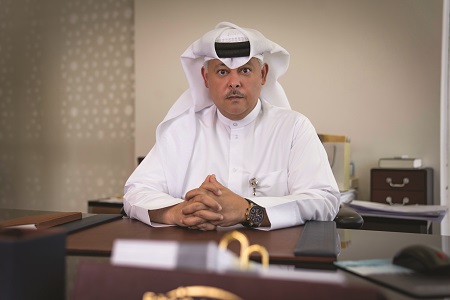
You’ve been around for 11 years. What are your commercial and technical milestones over the years, and do you have any numbers to share?
As Qatar’s satellite operator of choice, Es’hailSat has been serving broadcasters, telecom companies, enterprise and government customers for the past 11 years from our headquarters in Doha. Es’hail-1 launched to 25.5 East in 2013 followed by Es’hail-2 at 26 East in 2018, both carrying Ku-band and Ka-band capacity for MENA. The early years since our incorporation in 2010 saw strategic partnerships with customers such as Al Jazeera, beIN and Ooredoo for broadcast, telecommunications and VSAT services.
Between 2015 and 2020, the trend continued with government customers such as the Civil Aviation Authority in Qatar as well as commercial partnerships across the MENA region. 2019 saw the launch of our state-of-the-art teleport in Doha and the commissioning of our iDirect hub, which can deliver fully managed services. Spread across 50,000sqm with more than 99.9% availability, we are now able to expand into a host of new services from our teleport. With capacity utilisation across both our satellites at about 70%, which is above industry standards, we support key customers in the region with adequate capacity availability for expansion and to support new customers.
Can you elaborate on what advantage you enjoy in these spaces, and if there are specific preferences for Ku-band or Ka-band in different MENA markets? How much capacity do you have left?
We definitely operate in both, as is evident from our two satellites and their capacity configuration. We believe each band has its own target market and customers who cannot do without the advantages that they offer, be it technical or commercial. The premium video neighbourhood at 25.5 East / 26 East relies on our Ku-band capacity and reaches millions of viewers across MENA. This gives the major broadcasters in the region the ability to deliver their content to the maximum number of eyeballs, all from our teleport located in Doha.
Ka-band, on the other hand, provides data networking services to a wide variety of government and commercial customers. The economics of a lower cost per bit in Ka-band enables these customers to run efficient networks that are both robust and financially viable. In terms of capacity, we are certainly operating our satellites at a high fill rate because of the reasons mentioned above, but depending on the requirement, we can provide potential customers with as much as they need.

Are there plans for a new satellite soon?
At an average fleet age under six years, we at Es’hailSat have one of the youngest fleets of any satellite operator in the MENA region. Our plans are to continually upgrade our capabilities in terms of our teleport, ground segment and managed services, to be able to leverage our young fleet in orbit today. We are working on multiple long-term projects to fulfil our vision to be a world-class satellite operator and service provider that effectively contributes to the success of Qatar’s National Vision 2030 by adding a new dimension to the diversifying economy. We are evaluating new satellites in GEO for future applications such as IFC, IoT and others. At the same time, we are also open to partner with NGSO constellations to achieve a winning proposition for all parties concerned.
Tell us more about your teleport – some of the tech highlights and how it will improve your services.
Es’hailSat’s state-of-the-art teleport in Doha was launched officially in 2019 to manage the operations of our satellite, and also to support value-added services for our customers. To support one such initiative, we have commissioned Comtech and iDirect VSAT hubs at the teleport to provide fully managed service packages to our end users. This has helped organisations improve their own network and offer services to their end users, providing them with resilient and reliable communication services for the enterprise needs. Our teleport enables us to adopt the latest advancements in international technology, including cloud playout services, content delivery networks (CDNs), and mobility and telecommunication services. We provide hosting services both in terms of data centre and equipment and antenna hosting, and provide managed services as required by the customers.
You were primarily developed to establish Qatar’s presence in space. How has your mandate changed over the years, and what is the evolving vision?
Es’hailSat’s satellites are a symbol of Qatar’s commitment to free, secure and independent communication, and the World Cup offers the perfect opportunity for us to showcase our capabilities. Even beyond that, Qatar’s 2030 Vision has been designed to move us from a carbon-based to a knowledge-based economy, and Es’hailSat is a key part of that vision. For our business, the priority over the next 12 months is to expand our services to support the rapid growth of Qatari customers across the board. The sky is the limit for Qatar’s ambitions, and Es’hailSat wants to ensure that we are the first choice for companies in the country and across the region wherever there is a need for connectivity over satellite.

What are your current offerings in the DTH space, and how are you adapting to the new OTT ecosystem?
For our customers, path-breaking broadcasters such as Al Jazeera and beIN Sports, opportunities lie in delivering every possible genre of content to consumers across all touchpoints – the television at home, the mobile device on the move and over Internet connectivity over land, sea or air. Es’hailSat is enabling these opportunities by adopting cutting-edge technology and delivering a world-class service from our strategically located teleport facility in Doha. In addition, we are evaluating various OTT projects both from a perspective of supporting existing clients and independent OTT aggregation.
With the World Cup coming up in Qatar and significantly higher broadcast demands, is Es’hailSat also looking to ramp up? What will you have on offer for media companies coming in to cover the event?
For the various mega-events such as the World Cup which are broadcast live across the globe, we at Es’hailSat have enhanced our satellite news gathering services capabilities. These, along with our Es’hail-1 and Es’hail-2 satellites at 25.5/26 East hotspot, will provide the backbone required by news broadcasters and television channels to carry these events across the region and beyond.
What challenges are satellite operators facing these days, and how are you addressing them?
The first would be piracy, as content protection is still a concern for the MENA region. Although a majority of the large piracy incidents have been addressed and discontinued, there is still rampant online piracy of content. Then there are always price pressures when it comes to satellite capacity, services and equipment. This has two, initially because of the compulsions that arose during the pandemic, but also because people have thereafter realised that a lot can be accomplished online, even if one is not physically present in offices and other locations. The net result of this has been that connectivity has become more critical to the lives and livelihoods of people, and robust telecommunication services are now seen as an essential utility. While the industry can do a lot more, the pace of broadband growth in MENA has been quite encouraging. The deployment of 4G and 5G infrastructure has been critical to developing low-cost wireless broadband in MENA. Es’hailSat’s satellite services and our teleport infrastructure are well-positioned to deliver cost-effective broadband solutions across the MENA region.
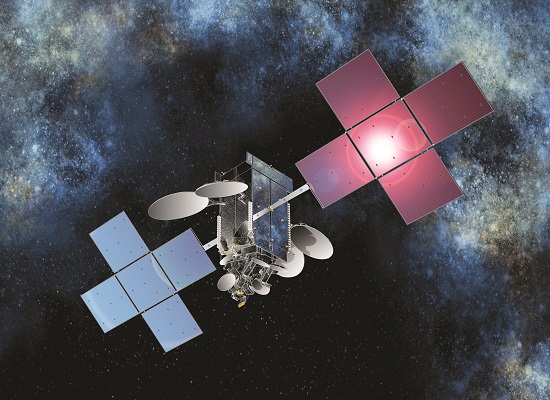
There’s a lot of activity in the LEO and MEO space. What are Es’hailSat’s plans on this front?
We remain open to partnerships with NGSO companies to leverage upon our strengths, which are world-class teleport facilities and top-of-the-line assets in space and on the ground, to name a few. As Qatar’s satellite operator of choice, we bring tremendous value to any NGSO partnership and can provide the local and regional expertise that these global companies need to build a sustainable business in the region.
Doing business in any space-based industry is hard, even if one considers the established geostationary satellite services segment. LEO and MEO are relatively young and unproven, which makes the recent gold rush of announcing constellations a trend that we believe needs to be approached with cautious optimism. A lot needs to be done before these systems become fully available to market, and the sheer volume of capital and technology advancements required makes it an uphill climb for the companies involved. We are happy to collaborate with these companies and bring our strengths to the table in a manner that enables collaborative growth.
They keep saying satellite is dying and linear channels are taking their last breath. What is your opinion about the place satellite will occupy in this market in the future, and why? Do you have any numbers to back up your claims?
From our perspective, the commercial television market still looks robust, even though the broadcast industry has seen a radical shift from linear satellite distribution to adopting internet-based OTT delivery over the last few years. MENA as a region has a mix of users who prefer streaming services, as well as a healthy number of those who would still want to consume their premium 4K/UHD content on a smart TV over a satellite DTH service. Due to this underlying demand demographic, we continue to remain bullish on the future of satellite television in the region for many years to come.
Are there any regional or global partnerships that you would like to elaborate on?
As recently as 2019, Es’hailSat signed a joint venture agreement with BridgeSat (now called BridgeComm) based in Denver, Colorado. This enables the installation of an optical ground station at our facilities in Qatar for low-cost laser satellite communications across the Middle East. We have signed agreements with global mobility satellite service provider Inmarsat for mobility services within Qatar, complementing the services we provide on our satellites. We have multiple agreements with other terminal and antenna and service providers, such as iDirect, Cobham, etc, that enhance and support our end-to-end service provisioning.
Over the past year, Es’hailSat has signed many strategic partnerships to enable Qatari companies to benefit from the most advanced technologies. We showcased some of our partnerships regarding maritime and mobile broadband connectivity at the Qatar International Boat Show in November 2021. Certain partnerships we now have allow us to offer enhanced VSAT support services in the maritime segment, while others cater to communications infrastructure required for vessels at sea. One such example is the successful proof of concept that we completed in 2021 using low-profile flat-panel VSAT terminals for the maritime environment, using the Es’hail-1 satellite.
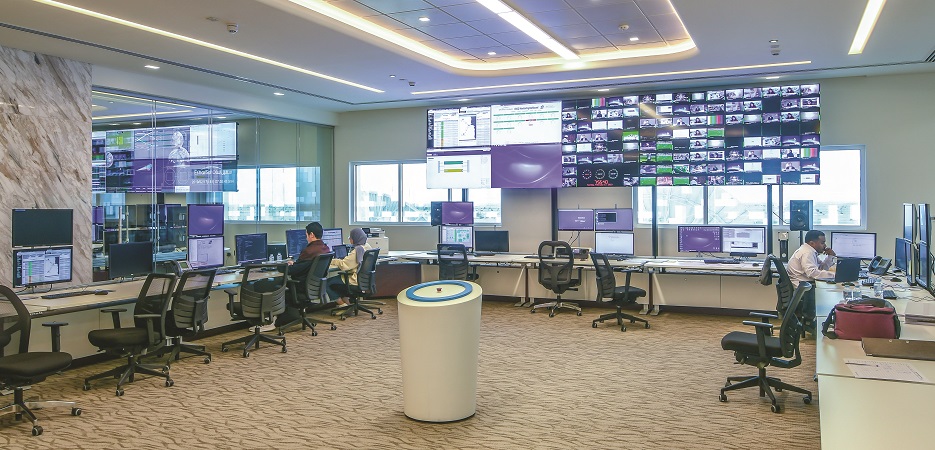
Who are some of the other customers in the Arab world that use your capacity?
Es’hailSat’s two satellites, Es’hail-1 and Es’hail-2 located at 25.5/26 East, offer coverage of North Africa and the Middle East, including both Gulf countries as well as other neighbouring countries such as Egypt, Sudan, Libya, Algeria, Morocco and Eritrea. We have commissioned Comtech and iDirect Hub Services from our teleport, which offers fully managed data service packages to end users. Innovative solutions include fully encrypted, secure, fixed and mobile communications, anti-jamming capabilities, as well as robust and reliable broadcasting services catering to audiences across MENA.
What steps have you taken to protect the interests of content owners and legitimate rights owners?
By enhancing our monitoring and anti-jamming capabilities, we are able to offer content owners the assurance that their media properties are in safe hands from a distribution perspective. We continue to support numerous organisations that are trying to combat piracy issues across the region, and remain committed to this cause.



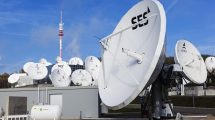
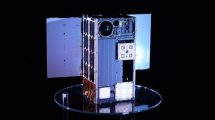







Add Comment